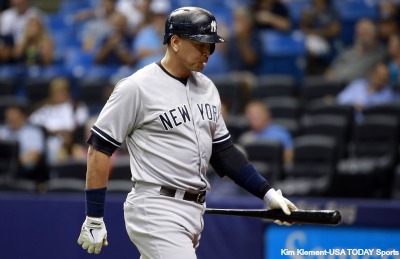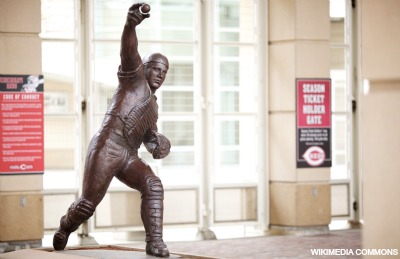Decades after his starring days with the Cincinnati Reds, Johnny Bench has two new hips. But the reason might surprise you.
"I had a car wreck when I was 18, hit by a drunk driver … he hit me right in the driver-side door," Bench says.
The doctor who treated him was surprised he was alive, much less in such great condition after the accident.
"He told me, 'Son, you have the largest bones I've ever seen in my life. That's the only reason you're alive."
But that admiration came with a warning: Bench was likely to suffer from hip trouble later in life.
Flash forward 50 years, and the doctor's forecast has come true: Bench has had both of his hips replaced after chronic hip pain developed within the past 15 years. Both hips were replaced by Stryker Orthopaedics, which outfitted Bench with innovative joint technology that reduced the risk of dislocation and posed a low risk of erosion or other complications.
Bench is confident his car accident was the primary cause of his hip pain, which set in quickly in his late 50s and 60s, although he suspects his Hall-of-Fame baseball career also played a role.
"[After the accident] I went out and squatted 450,000 times, plus the collisions at the home plate," Bench says. "That might have had something to do with it."
In the context of today's baseball landscape, Bench's hip injuries might not be given a second thought. Hip problems have afflicted some of the game's best athletes in recent years, including Yankees slugger Alex Rodriguez and Blue Jays star Troy Tulowitzki. If you look at pro baseball players today, hip problems just seem like part of the game -- a natural risk of doing business.
Except that hasn't always been the case. In fact, for as common as hip injuries now seem in the majors, it's a fairly new development -- and one that has come on very quickly. Back in 2009, a rash of hip injuries across the majors was greeted as a new, mysterious plague on professional baseball players. A feature in The New York Times treated the rise of hip injuries with the same gravity often reserved for concussions and other veritable sports disasters.
"No studies have been published to confirm this phenomenon," wrote the Times. "But many trainers and orthopedists say the anecdotal evidence is jarring, and medical staffs for Major League Baseball teams and franchises in other sports are scrambling to understand why athletes' hips suddenly seem so fragile."

One leading theory: The focus of building muscle is leaving joints ill-equipped to handle the extra workload. Today's professional athletes place a premium on building muscle strength, and it's inevitable that focus on certain areas of the body have led to trainers and athletes alike overlooking other parts.
Bench comes from an old-school point-of-view, and the increased care taken to alleviate the stress on modern players' bodies surprises him. But even he suspects that the new methods of training players' bodies could actually be a liability.
"I think it's actually in the training that they do, player exposure to new muscles and joints," Bench says. "Baseball should be done as baseball exercises. Now they do so many things. ... They'll pull a muscle and I'll think, 'Where was that muscle?'"
Another theory with some weight is that players' hips are subjected to much more stress earlier in life, particularly when the hip joint is still developing. Non-contact labral tears in the hip typically result from a femur head that does not properly fit the hip socket. The poor fit pinches the labrum between the ball joint and its socket, causing irritations that lead to tearing.
In Bench's case, the trauma from a car accident could cause distortions of the joint, particularly as the bones age -- and the strain of catching could exacerbate those problems. But adolescents and younger players face similar risks because their bones are still growing, and excessive stress -- whether in the form of weight-lifting, blunt trauma or other strain caused by intense training -- can cause abnormalities in the fit of the femur head to the socket.

That might be setting baseball players up for problems later in life. This season, six MLB players have suffered season-ending hip injuries. Last year, Troy Tulowitzki -- then with the Colorado Rockies -- had his 2014 campaign cut short by chronic pain in the hip joint caused by a torn labrum. Tulowitzki had season-ending surgery on the hip, which then required months of rehab.
Early on, Tulowkitzki wasn't sure what the pain was indicating. He had a history with sports hernias and experienced the hip pain as groin pain, as is common with labrum injuries. The injury was mistreated as a muscle strain, in part because diagnosis of labrum tears can be complicated.
Meanwhile, stress in the ill-fitting joint continued to cause cartilage damage. Tulowitzki made a full return this season, but his batting average and on-base percentage are as low as they've been since 2008.
To an older star like Bench, today's players have incredible physical physiques -- ones that should be capable of withstanding the same degree of wear-and-tear as the Reds star and his contemporaries suffered.
"They're such physical specimens," Bench says. "I can't see why the days off. ... I think the guys playing today are unbelievable athletes."
But that physical development might be precisely what's causing guys like A-Rod to have hip trouble decades ahead of Bench. Training strategies have improved, but they aren't without their drawbacks. The body is a complex, interconnected machine, and imbalances in training are likely to create unexpected complications.
Then again, maybe all these modern-day stars should look back into the past for a fix.
"They don't take in as much salt as we did," Bench says. "They say salt's bad for you, but it worked for us."






